Physical Address
304 North Cardinal St.
Dorchester Center, MA 02124
Physical Address
304 North Cardinal St.
Dorchester Center, MA 02124
Affiliate marketing remains one of the most effective ways to turn a blog into a source of income. It allows bloggers to earn scalable, often passive revenue by recommending products and services they genuinely trust and enjoy. While building a steady income stream takes time, effort, and consistency, I can confidently say from experience that it’s absolutely achievable.
In this guide, I’ll walk you step by step through the entire process of getting started with affiliate marketing from choosing the right programs to crafting content that converts and driving consistent traffic. Whether you’re an experienced blogger or just launching your site, you’ll find practical, actionable strategies here to help you grow and succeed.
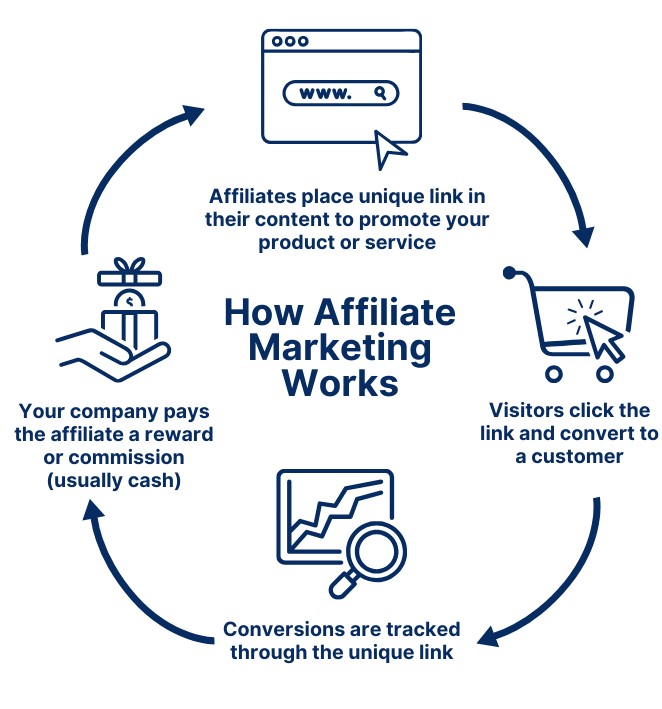
Affiliate marketing is a strategy where creators and influencers earn income by promoting products or services through unique affiliate links. When readers, subscribers, or followers click on these links (or use special affiliate codes) and make a purchase, both the affiliate and the brand benefit.
Since affiliate income depends on sharing links or codes provided by partner programs, blogging is one of the most effective platforms for driving affiliate sales. A well-crafted blog not only builds trust with readers but also provides natural opportunities to recommend products that align with your content.
If you’re just stepping into the world of affiliate marketing, it’s important to understand a few key terms:
Before diving into affiliate marketing, it’s crucial to choose a blog niche that aligns with products and opportunities in the affiliate space. Simply dropping random links into your content won’t work you’ll earn far more by focusing on a niche where the products you promote feel natural and relevant to your audience.
Once your niche is defined, the next step is to research affiliate programs and networks. Amazon Associates is one of the most popular options because of Amazon’s massive product range, but platforms like ShareASale and others can also provide valuable opportunities depending on your niche.
After selecting the right programs, sign up for affiliate partnerships that make sense for your content. Keep in mind: success depends on relevance. Adding too many unrelated links may overwhelm readers and reduce trust, while carefully chosen, niche-specific links build credibility and increase conversions.
With programs in place, it’s time to put your affiliate links to work. Integrate them naturally into your blog content whether in new posts or by updating older articles. Just like keyword stuffing can harm SEO, forcing irrelevant products into your writing can hurt your chances of success.
The key is relevance and authenticity. For example:
By weaving affiliate links into your content in ways that feel helpful and genuine, you’ll build trust with readers and improve your chances of generating consistent affiliate income.
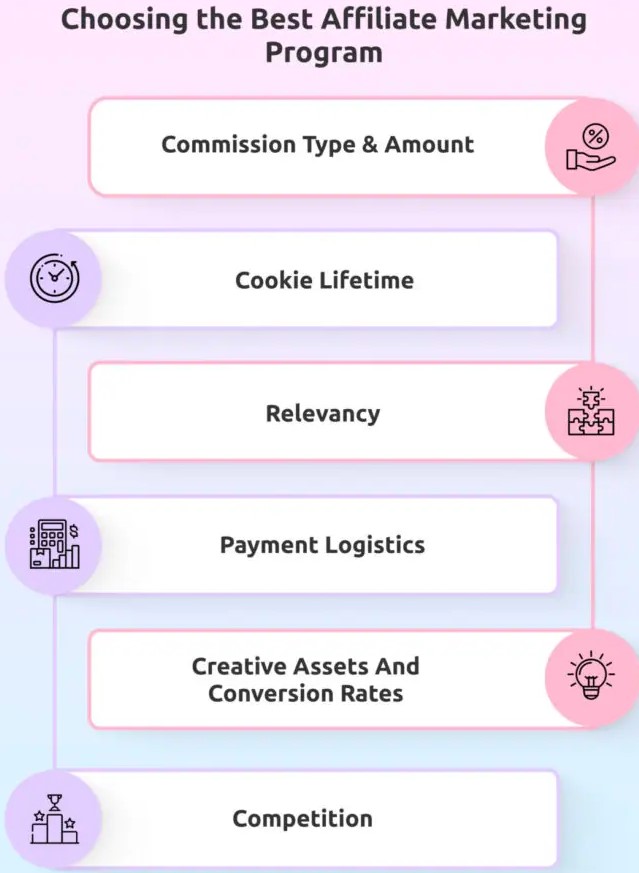
Affiliate programs are everywhere these days, and while that creates plenty of opportunities, it doesn’t mean every program is the right fit. Beginners, in particular, should avoid jumping into the first option they see. Instead, focus on key factors such as relevance, commission rates, product quality, credibility, payout thresholds, and program terms before committing.
Start by choosing an affiliate network or marketplace that offers products relevant to your niche. The more closely aligned the products are with your content, the easier it will be to promote them authentically. Look for programs that provide a variety of options within your niche so you have flexibility as your content evolves.
Commission rates are equally important. Even if you create amazing content, low-paying programs may not provide a worthwhile return on the time and effort you invest. Seek out affiliate partners that offer competitive payouts.
Product quality and brand credibility should also weigh heavily in your decision. Promoting unreliable products or questionable companies may hurt your reputation and undermine trust with your audience. Always prioritize affiliates that sell high-quality, trustworthy products that you can stand behind.
Finally, pay attention to payout terms and thresholds. Some programs require affiliates to reach very high minimum earnings before paying out, while others may have contract terms that don’t align with your goals. Carefully review each program’s requirements to ensure they are fair, attainable, and beneficial for both sides.
By considering these factors, you’ll be able to choose affiliate programs that not only generate income but also strengthen your blog’s credibility and long-term success.
With so many affiliate programs available, beginners often find it easier to start with well-established, trusted platforms. Some of the most popular options include:
These programs have long track records, strong reputations, and wide product selections, making them excellent choices for creating content that converts. Partnering with established networks can also make it easier to build trust with your audience and start generating affiliate income more quickly.
For beginners, earning money through affiliate marketing can feel overwhelming but it doesn’t have to be. The key is to take a step-by-step approach, starting with creating high-quality, valuable content. Strong content is the foundation of any successful affiliate strategy and plays a major role in driving conversions.
If you want to maximize your monthly earnings and ensure your time and effort pay off, focus on these core components:
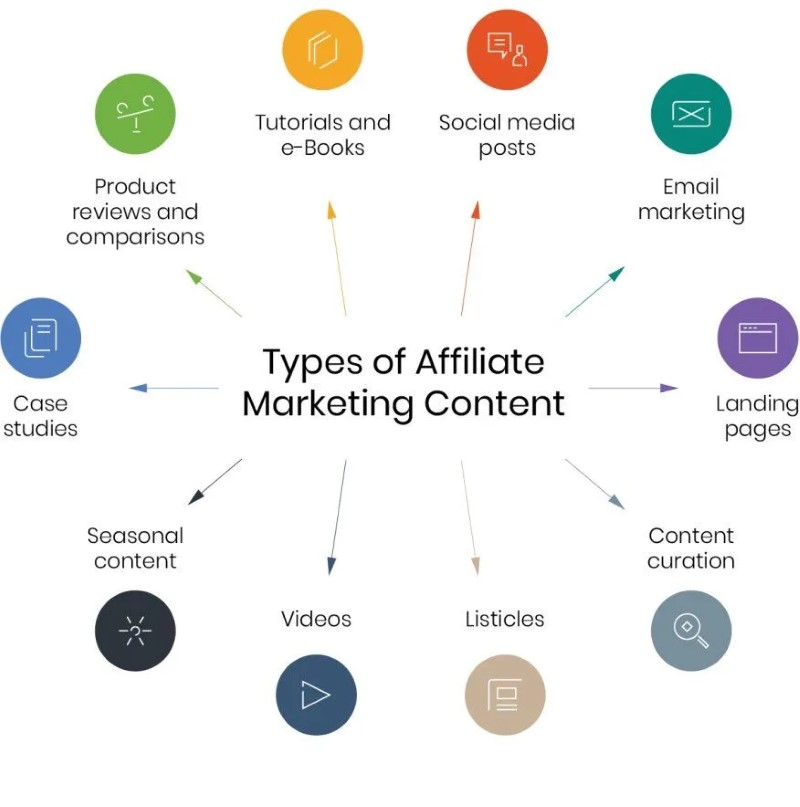
There are many effective content formats you can use to create compelling affiliate content for online retailers. Some of the most popular include:
You can also combine formats for even more impact. For example, a blog review could feature an embedded video review, plus internal links to related posts for added depth and additional affiliate opportunities. By mixing and matching these approaches, you can consistently produce valuable content that benefits both your readers and your affiliate partners.
When crafting blog posts, pay close attention to your headlines they should be compelling, click-worthy, and relevant. Using investigational keywords can give your titles extra punch and help attract the right audience from search engines.
Strong visuals are also essential for optimization. High-quality product images, infographics, and comparison tables not only make your content more engaging but can also boost SEO. Search engines favor posts with visuals, and readers are more likely to stay engaged when your content is visually appealing.
Another key to effective optimization is focusing on your audience’s needs. Write with the goal of solving problems and answering questions. A catchy headline may grab attention, but it’s your valuable, trustworthy content that keeps readers coming back.
Finally, remember: don’t write solely for clicks or conversions. While titles and SEO matter, long-term success in blogging comes from building trust and credibility. Prioritize transparency and genuinely helpful content to create a blog that not only earns conversions but also sustains consistent traffic over time.
Driving traffic to your affiliate blog posts requires a mix of strategies that work together to boost visibility and engagement. Some of the most effective methods include SEO, social media promotion, email marketing, guest blogging, and strategic partnerships.
Search Engine Optimization (SEO)
SEO is one of the most reliable ways to grow long-term traffic. By optimizing your posts around relevant keywords and keeping your content fresh, you’ll improve your chances of ranking higher in search results and attracting consistent organic visitors.
Social Media Promotion
Leverage your social platforms to amplify your content. Whether you share product images, short-form videos, or step-by-step guides, social media can drive readers directly to your affiliate posts. Many affiliate dashboards also provide promotional materials you can use to strengthen your campaigns.
Email Marketing
Building an engaged email list is a powerful traffic driver. Use newsletters to highlight new blog posts, share niche insights, or offer curated product recommendations. By regularly delivering valuable content to subscribers, you’ll nurture trust and encourage clicks back to your blog.
Guest Blogging
Contributing posts to other blogs in your niche or collaborating with brands and fellow affiliates—can expand your reach. Guest blogging provides opportunities to link back to your site, build authority, and drive targeted traffic from new audiences.
Partnerships
Working with other creators or brands can have a similar effect. Collaborations open doors to cross-promotion, internal linking, and new readership opportunities, all of which can boost affiliate conversions and revenue.
By combining these strategies, you’ll create multiple streams of traffic that not only increase your affiliate income but also strengthen your blog’s visibility and credibility over time.
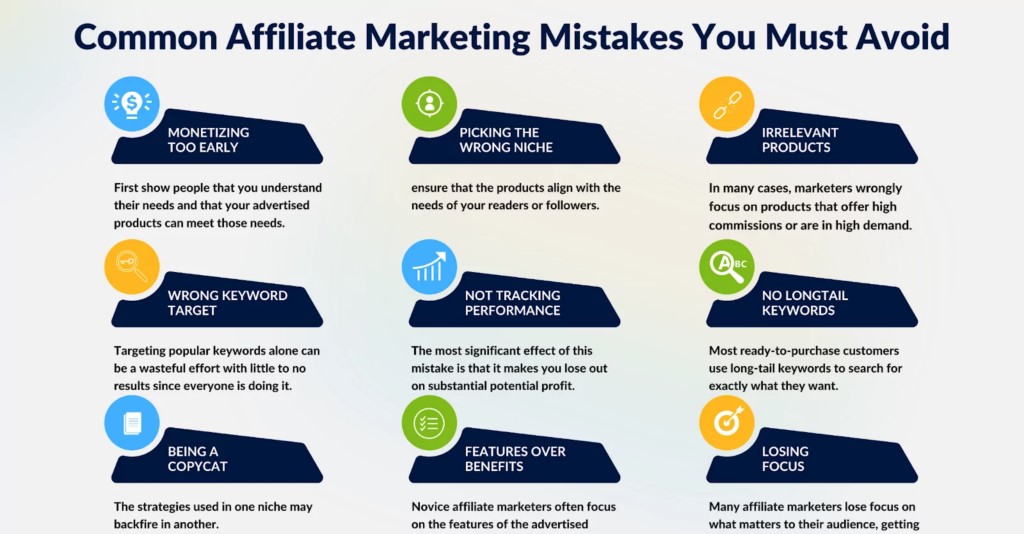
It can be tempting to stuff your blog posts with broad keywords and a flood of affiliate links, but doing so often backfires. Overloading content with links can feel spammy to readers and actually reduce your ability to earn through affiliate marketing. Successful affiliate marketers know to place links thoughtfully and only where they add real value.
Another common mistake is promoting low-quality or irrelevant products. Linking to items that don’t align with your audience’s interests can damage trust and undermine your credibility. Always research products thoroughly and only partner with brands you can genuinely endorse.
No matter your niche whether it’s lifestyle, travel, or a personal storytelling blog disclosure is crucial. Every affiliate post should include a clear disclaimer, letting your readers know when content includes affiliate links. This isn’t just good practice; it’s required by FTC guidelines. Failing to disclose affiliate relationships can put you at legal risk and weaken the trust you’ve worked to build with your audience.
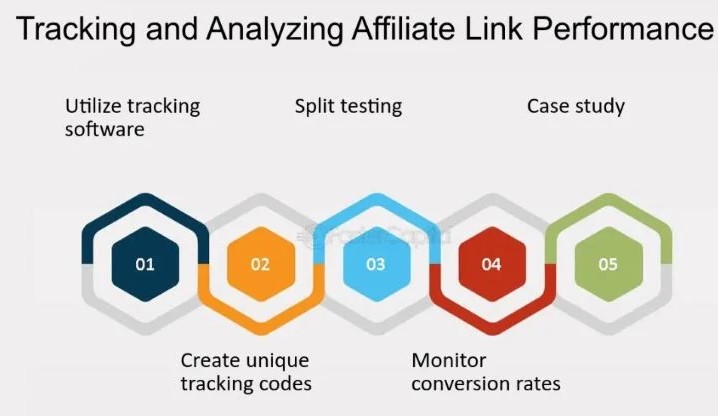
Now that we’ve discussed creating valuable blog content and engaging posts for your audience, it’s time to focus on measuring performance. This includes tracking how well your blog keywords are performing and evaluating the conversion rates generated through your affiliate programs.
Tracking the success of your affiliate links begins with choosing the right tools to meet your needs. These tools can range from simple to advanced and may be part of your existing management systems or independent solutions. To effectively monitor your affiliate blogs, consider the following options:
Using these tools, you can accurately track clicks, conversions, and overall performance, allowing you to optimize your affiliate marketing strategy for better results.
Making money with affiliate marketing can be highly rewarding, but it often requires some trial and error before you find your rhythm. To help newbie affiliates improve performance, here are several optimization strategies to consider:
Affiliate marketing offers one of the easiest and most scalable ways to monetize your blog. By following the steps in this guide selecting a niche, choosing the right affiliate programs, crafting high-converting content, and driving traffic you can transform your blog into a steady income stream. Begin with small, manageable steps, remain consistent, and continually refine your strategy to steadily grow your affiliate earnings over time.